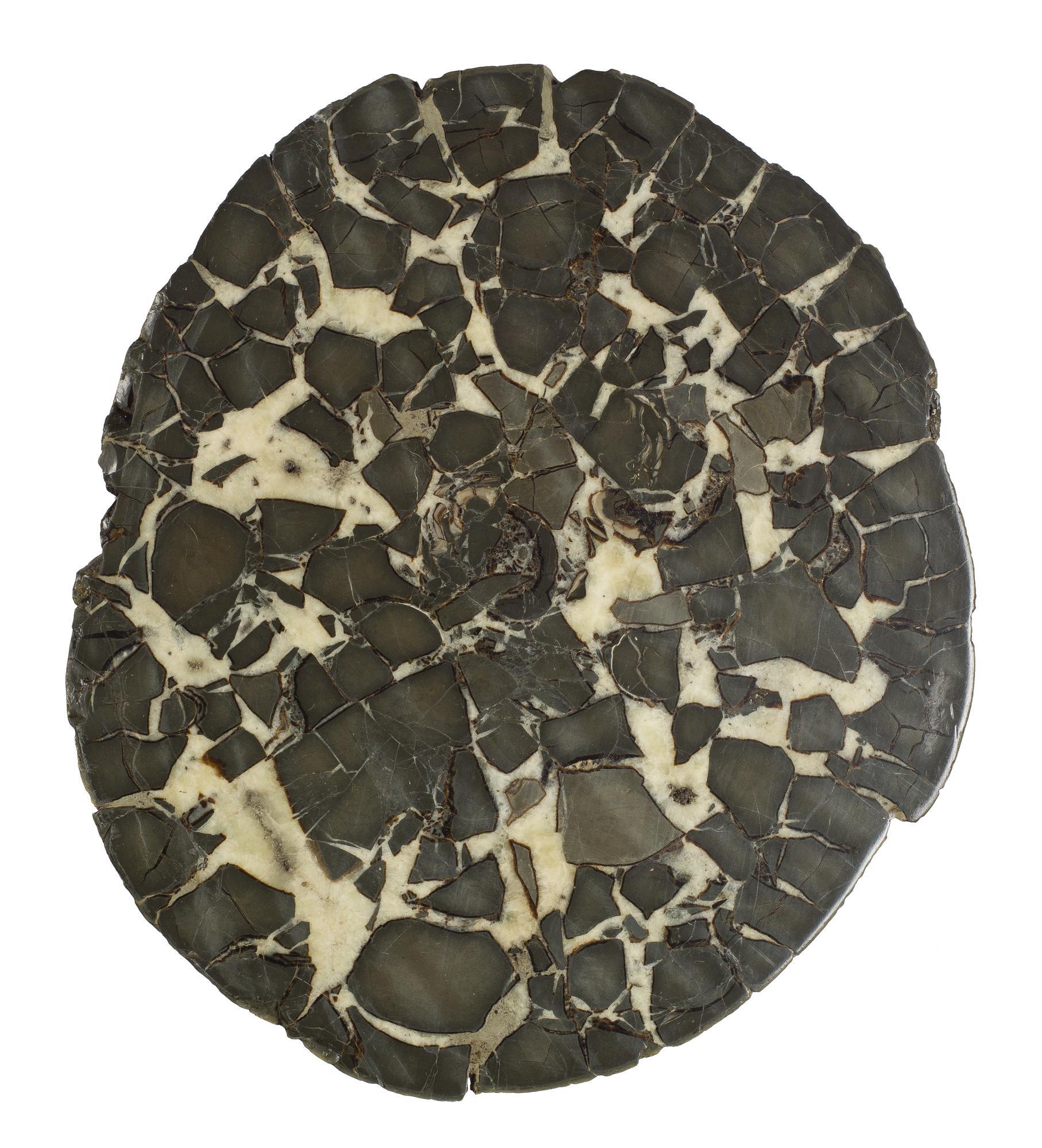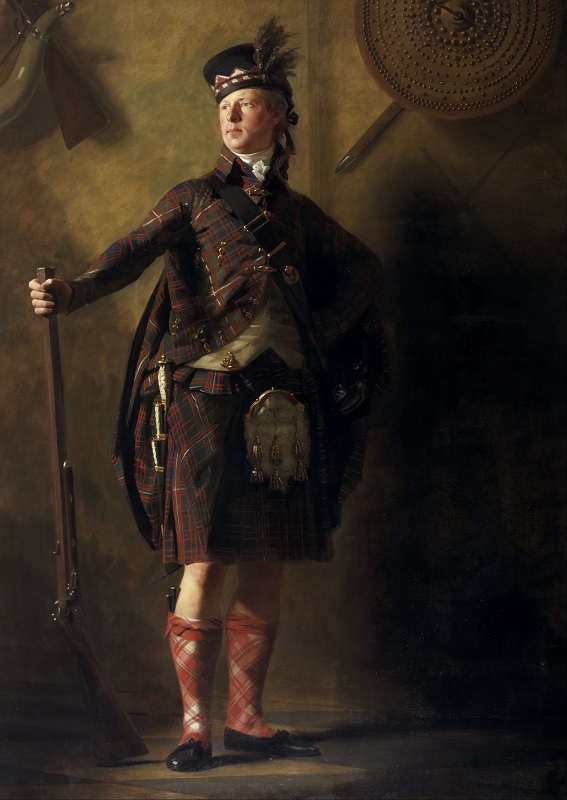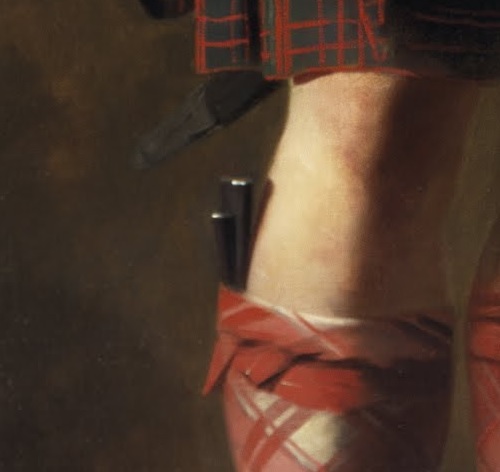| Author |
Message |
Leo Todeschini
Industry Professional

|
 Posted: Tue 15 Feb, 2022 8:43 pm Post subject: sgain dhu - origins, originals? Posted: Tue 15 Feb, 2022 8:43 pm Post subject: sgain dhu - origins, originals? |
 |
|
Hi All,
This is either a simple or devilishly hard question and any thoughts and especially images would be very welcome.
We know lots about the dirk and I know a bit, but I know nothing about the sgain dhu. Is it a purely modern (Victorian) invention or is it much older? Did they just formalise something into a standardised form that already existed. Was it always a sock knife?
Basically I would like to make a reproduction to add to the Tod Cutler line, but I want to make something plausibly late 17th or 18thC, not one of these modern pseudo regimental ones.
Any thoughts?
Regards
Tod
www.todsworkshop.com
www.todcutler.com
www.instagram.com/todsworkshop
https://www.facebook.com/TodsWorkshop
www.youtube.com/user/todsstuff1
|
|
   |
 |
|
Stephen Curtin
|
 Posted: Wed 16 Feb, 2022 6:02 am Post subject: Posted: Wed 16 Feb, 2022 6:02 am Post subject: |
 |
|
I've read that the sgain dubh is an early 19th century invention. Supposedly it developed from another older type of knife called a sgain achlais (armpit knife), so named because it was worn concealed under the doublet near the armpit. You might find this useful
http://myArmoury.com/review_ab_sgian.html
Éirinn go Brách
|
|
   |
 |
|
Adam Simmonds
Location: Henley On Thames Joined: 10 Jun 2006
Posts: 169
|
 Posted: Wed 16 Feb, 2022 10:26 am Post subject: Posted: Wed 16 Feb, 2022 10:26 am Post subject: |
 |
|
I've read that these small knives were typically carried concealed and then revealed and worn in the sock (or elsewhere, openly) in certain circumstances such as in another person's house where carrying a concealed weapon was considered indecorous.
https://en.wikipedia.org/wiki/Sgian-dubh
|
|
  |
 |
Abe Zettek

|
 Posted: Wed 16 Feb, 2022 3:10 pm Post subject: Posted: Wed 16 Feb, 2022 3:10 pm Post subject: |
 |
|
Hi Tod 
I'll preface it by saying I don't know a ton about these knives... but hoping this will help a little.
The National Museums Scotland site has a few older sgianan (Gaelic plural?) in their collection(s), in a few different forms. There is one in particular that I really like... it gives me a 'late 18th/early 19th century vibes', but is listed as 19th century on their site. I've wanted to replicate it for a while but have not had the chance - to me it looks like a comparatively simple but elegant form to make.

There is a portrait of Colonel Alexander Ranaldson MacDonell of Glengarry (painted in 1812 by Henry Raeburn) that shows a very similar knife (and fork?) stuck in his cadagh (hose) in a familiar way, images attached here.
So: not a lot, and a bit later than you are looking for, but at least they're not the bejeweled, plastic-y things most of us are familiar with!
Maybe a start...
 Attachment: 116.5 KB Attachment: 116.5 KB

 Attachment: 37.64 KB Attachment: 37.64 KB

|
|
  |
 |
|
Dan D'Silva
|
 Posted: Wed 16 Feb, 2022 3:42 pm Post subject: Posted: Wed 16 Feb, 2022 3:42 pm Post subject: |
 |
|
In The Scottish Dirk by James D. Forman there are a couple examples of sgian dubhs from the first half of the 19th century that have clip points with little taper (middle column, third picture from the top). Forman alleges that this is a typical early feature. The oldest purported sgian dubh I've come across (second from the right in this scan, dated to c. 1800) has a similar blade.
I'm a little skeptical that the knife itself evolved directly out of the long, stabby ones identified as sgian achlais. The two designs have little in common.
|
|
  |
 |
Chad Arnow
myArmoury Team


|
 Posted: Thu 17 Feb, 2022 7:16 am Post subject: Posted: Thu 17 Feb, 2022 7:16 am Post subject: |
 |
|
| Stephen Curtin wrote: | I've read that the sgain dubh is an early 19th century invention. Supposedly it developed from another older type of knife called a sgain achlais (armpit knife), so named because it was worn concealed under the doublet near the armpit. You might find this useful
http://myArmoury.com/review_ab_sgian.html |
Stephen,
I'm not sure the sgian dubh developed from the sgian achles. In reading what I wrote in that link (a long time ago  ), I tried not to make that link, because I agree with Dan D'Silva that they are fairly different. ), I tried not to make that link, because I agree with Dan D'Silva that they are fairly different.
I dimly recall a story, though, that mentions that a gentleman would take his sgian achles from concealment on his torso and stuff it in the top of his sock (where it would be visible) in certain circumstances to show he meant no harm. I'll have to try to dig up that reference. If I recall, that theory implies the smaller sgian dubh was a concession to convenience when this practice became part of formal dress, since a sgian dubh is easier to wear in your sock than a sgian achles...
That does all sound pretty tenuous, though... 

ChadA
http://chadarnow.com/
|
|
    |
 |
|
Stephen Curtin
|
 Posted: Thu 17 Feb, 2022 8:56 am Post subject: Posted: Thu 17 Feb, 2022 8:56 am Post subject: |
 |
|
Dan and Chad. Sorry, you guys are right, that was a poor choice of words on my part. What I should have said is that the sgain dubh is thought to have taken over the role (of a hidden blade) from the earlier sgian achlais.
The point I was trying to get at was, if Tod is looking to reproduce a 17th or 18th century knife, then perhaps a sgian achlais would be a better choice, as I'm not sure if there's any evidence for the sgian dubh from earlier than the 19th century.
Éirinn go Brách
|
|
   |
 |
Chad Arnow
myArmoury Team


|
 Posted: Thu 17 Feb, 2022 9:11 am Post subject: Posted: Thu 17 Feb, 2022 9:11 am Post subject: |
 |
|
I agree that a good sgian achles might be fun to see.  One issue, though, is that there are only a small handful (maybe 2) of historical pieces that get tentatively identified as sgian achles. One is the one I've owned a couple copies of through the years: One issue, though, is that there are only a small handful (maybe 2) of historical pieces that get tentatively identified as sgian achles. One is the one I've owned a couple copies of through the years:

Another has a carved wooden handle:

The antler hilted first one is probably easier to reproduce, though Vince Evans has recreated the carved one several times to stunning results.... 

ChadA
http://chadarnow.com/
|
|
    |
 |
Leo Todeschini
Industry Professional

|
|
   |
 |
Chad Arnow
myArmoury Team


|
 Posted: Fri 18 Feb, 2022 3:19 am Post subject: Posted: Fri 18 Feb, 2022 3:19 am Post subject: |
 |
|
Tod,
A good, earlier sgian dubh might be a seller. I'm not sure. A sgian achles or gralloch knife might be good as well. Check out this image I found. The third from the left may be an early sgian dubh:

I think I may have the book that scan is from; I'll have to check later and see where it comes from.

ChadA
http://chadarnow.com/
|
|
    |
 |
Chad Arnow
myArmoury Team


|
 Posted: Fri 18 Feb, 2022 12:16 pm Post subject: Posted: Fri 18 Feb, 2022 12:16 pm Post subject: |
 |
|
Anytime I have an excuse to dive into my books is a fun time.  So, the picture in the post directly above comes from James.D. Forman's "The Scottish Dirk." As a book on dirks, there is about nil on sgian dubhs or sgian achles beyond the captions to those photos above. The image of the dirk with the carved wood handle comes from John Wallace's "Scottish Swords and Dirks." Like Forman, what you see above is about all you get on the topic of sgian x. So, the picture in the post directly above comes from James.D. Forman's "The Scottish Dirk." As a book on dirks, there is about nil on sgian dubhs or sgian achles beyond the captions to those photos above. The image of the dirk with the carved wood handle comes from John Wallace's "Scottish Swords and Dirks." Like Forman, what you see above is about all you get on the topic of sgian x.
Fergus Cannan's "Scottish Arms and Armour" recounts a story about a smith making a sgian dubh. The author of that story lived 1732/3-1823. Later, Cannan notes "[The sgian dubh] was probably not worn in the sock before Victorian times--instead it was the sgian achlais, the 'armpit knife', so-called (the Englishman Edward Burt noted in the 1730s) because it was kept 'concealed in the Sleeve near the Arm-pit'." That's about as close as we get to the early story of those forms in that book.
The excellent book "Culloden: the Swords and the Sorrows" shows a whinger and an ivory hilted sgian (neither dubh nor achles) but that's about it. It's more an exhibition catalogue about Culloden-era artifacts, though, so I'm not surprised.
Ye olde Stone's "Glossary" pictures a "sgain [sic] dubh" dated in the caption "18th century" but its form and decoration (metalwork and basket weave-carved grip) matches 19th century examples to a T.
Blair's "European and American Arms" says:
| Quote: | | Sgian dubh (skean dhu). The short all-purpose knife worn in the top of the stocking with full Highland dress. Chaucer, in his 'Reeve's Tale', refers to a knife being worn in this way but the history of the sgian dubh apparently commences with the revival of Highland dress in the early 19th century... |
Logan Thompson's "Daggers and Bayonets" mentions the sgian dubh briefly and gives no dating.
Harold Peterson's "Daggers & Fighting Knives of the Western World" mentions neither at all. Read into that what you will. 
This is one of the earliest sgian dubhs in the National Museum of Scotland: https://www.nms.ac.uk/explore-our-collections/collection-search-results/sgian-dubh/396590 . Everything else in their online catalogue with a date is 19th or 20th century.
I don't have Drummond's "Ancient Scottish Weapons." Don't know what he would have said. Might pick that one up. 
Forman and Wallace seem to be about all we get in sgian achles, and that's all brief. I'd love to know of other sources.
The sgian dubh, apart from an extremely small number of examples, seems to be more of a 19th century thing.

ChadA
http://chadarnow.com/
|
|
    |
 |
Chad Arnow
myArmoury Team


|
 Posted: Sat 19 Feb, 2022 8:12 am Post subject: Posted: Sat 19 Feb, 2022 8:12 am Post subject: |
 |
|
One more to add to the mix: "Weapons of the Highland Regiments 1740-1780," a monograph by Anthony D. Darling (Historical Arms Series No. 33), discusses pistols, swords, dirk, and targes. It seems to lack any mention of anything sgian-related, though in fairness, I just skimmed it and haven't read it in detail in some years. The seeming lack of mention could be because they were not official issue to regiments during that time or because they were not popular or they were expected to be supplied by the soldier. In the case of the sgian dubh, it may be more evidence that it is most often a 19th century item.

ChadA
http://chadarnow.com/
|
|
    |
 |
Leo Todeschini
Industry Professional

|
|
   |
 |
|
|

